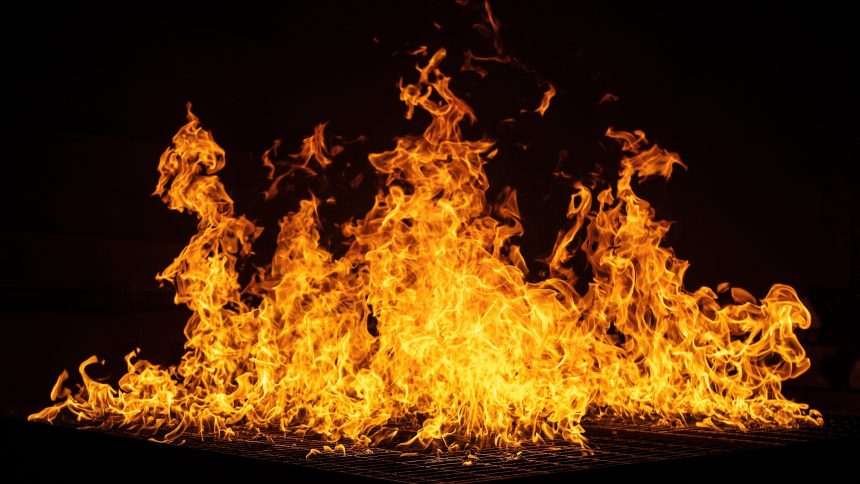Gas heaters have all the features that you adore about an open fire minus the hassle that goes with it. If you are currently deciding on installing one in your home, there are many things to consider. First, think about the size of the space and how quickly the heater will be able to warm the space. Aside from room size and heating capacity, you should also consider the local climate, ceiling height, whether the room gets direct sunlight, ceiling height, and whether the home has insulation.
The output of a gas heater is measured in Kilowatt per Hour (kWh). Meanwhile, the amount of gas that is consumed is measured in Megajoules per Hour (MJ/hr).
What to Look for in Gas Heaters
If you’re thinking about purchasing a gas heater, here are some features to look for:
Design
More than just providing heat, a gas heater should also look good. A great design is important because most of the time heaters serve as a centrepiece, a focal point in any room.
Quality
An excellent gas heater should be engineered meticulously and manufactured to stringent standards.
Energy Efficiency
Heaters should maximize energy use with as little cost as possible. Energy efficiency in heaters is how it converts gas to heat, and this is a key feature. Most manufacturers specify the energy efficiency level of a particular heater, which is expressed in kWh. You should also watch out for a heater’s Star Ratings, which is a requirement for all models sold in Australia. Six stars are the best possible rating that a gas heater could get.
Safety
Gas heaters should be equipped with safety features which give assurance to homeowners that they are safe to use.
Simple Installation
While gas heater components should be engineered with the greatest precision, they should also be easy to install, simple and straightforward to use.
Customer Support and Warranty
Installing gas heaters could be a daunting task, and without a trusted gas fire specialist, other problems and issues may arise. Look for providers that offer full end-to-end services to customers. Companies should always offer their customers at least 10 years warranty on the heat exchange.
Types of Gas Heaters
There are generally two types of gas heaters: flued or portable/unflued. These are further sub-divided into sub-groups: wall heaters, radiant, convectors, radiant-convectors, flued radiant, and power flued.
Flued heaters
A flue is essentially a pipe that allows exhaust gases from the heater to exit outside. Flued heaters keep the fumes out of the room, which makes you avoid unsafe emissions from clouding your home.
Flued heaters can be used in smaller indoor areas where a flue pipe can easily be installed. People suffering from asthma or respiratory problems usually opt to use flued heaters.
Portable or Unflued heaters
Portable or unflued heaters are more energy efficient. In this type of heater, there is a high conversion rate of heat energy from gas. However, without proper ventilation, it is possible that condensation build-up might occur.
Gas heaters have all the features that you adore about an open fire minus the hassle that goes with it. If you are currently deciding on installing one in your home, there are many things to consider. First, think about the size of the space and how quickly the heater will be able to warm the space. Aside from room size and heating capacity, you should also consider the local climate, ceiling height, whether the room gets direct sunlight, ceiling height, and whether the home has insulation.
The output of a gas heater is measured in Kilowatt per Hour (kWh). Meanwhile, the amount of gas that is consumed is measured in Megajoules per Hour (MJ/hr).
What to Look for in Gas Heaters
If you’re thinking about purchasing a gas heater, here are some features to look for:
Design
More than just providing heat, a gas heater should also look good. A great design is important because most of the time heaters serve as a centrepiece, a focal point in any room.
Quality
An excellent gas heater should be engineered meticulously and manufactured to stringent standards.
Energy Efficiency
Heaters should maximize energy use with as little cost as possible. Energy efficiency in heaters is how it converts gas to heat, and this is a key feature. Most manufacturers specify the energy efficiency level of a particular heater, which is expressed in kWh. You should also watch out for a heater’s Star Ratings, which is a requirement for all models sold in Australia. Six stars are the best possible rating that a gas heater could get.
Safety
Gas heaters should be equipped with safety features which give assurance to homeowners that they are safe to use.
Simple Installation
While gas heater components should be engineered with the greatest precision, they should also be easy to install, simple and straightforward to use.
Customer Support and Warranty
Installing gas heaters could be a daunting task, and without a trusted gas fire specialist, other problems and issues may arise. Look for providers that offer full end-to-end services to customers. Companies should always offer their customers at least 10 years warranty on the heat exchange.
Types of Gas Heaters
There are generally two types of gas heaters: flued or portable/unflued. These are further sub-divided into sub-groups: wall heaters, radiant, convectors, radiant-convectors, flued radiant, and power flued.
Flued heaters
A flue is essentially a pipe that allows exhaust gases from the heater to exit outside. Flued heaters keep the fumes out of the room, which makes you avoid unsafe emissions from clouding your home.
Flued heaters can be used in smaller indoor areas where a flue pipe can easily be installed. People suffering from asthma or respiratory problems usually opt to use flued heaters.
Portable or Unflued heaters
Portable or unflued heaters are more energy efficient. In this type of heater, there is a high conversion rate of heat energy from gas. However, without proper ventilation, it is possible that condensation build-up might occur.
